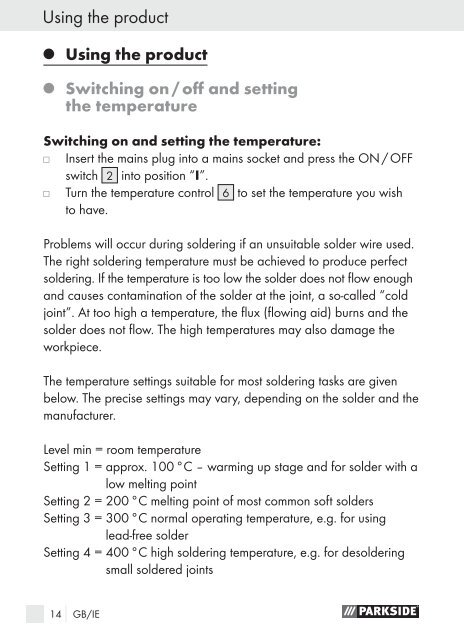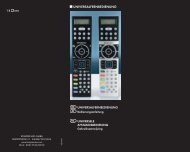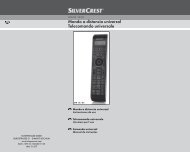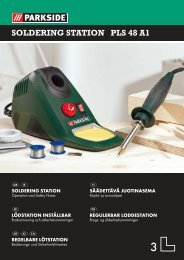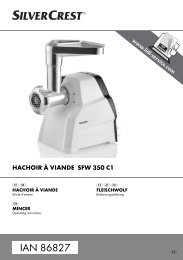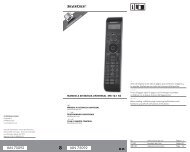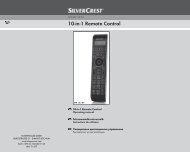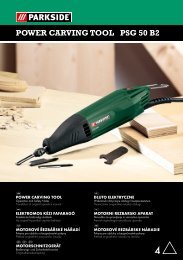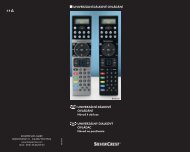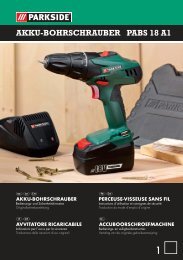SOLDERING STATION PLS 48 B1 - Kompernass
SOLDERING STATION PLS 48 B1 - Kompernass
SOLDERING STATION PLS 48 B1 - Kompernass
Create successful ePaper yourself
Turn your PDF publications into a flip-book with our unique Google optimized e-Paper software.
Using the product<br />
Q<br />
Using the product<br />
Q<br />
Switching on / off and setting<br />
the temperature<br />
Switching on and setting the temperature:<br />
Insert the mains plug into a mains socket and press the ON / OFF<br />
switch 2 into position “I”.<br />
Turn the temperature control 6 to set the temperature you wish<br />
to have.<br />
Problems will occur during soldering if an unsuitable solder wire used.<br />
The right soldering temperature must be achieved to produce perfect<br />
soldering. If the temperature is too low the solder does not flow enough<br />
and causes contamination of the solder at the joint, a so-called “cold<br />
joint”. At too high a temperature, the flux (flowing aid) burns and the<br />
solder does not flow. The high temperatures may also damage the<br />
workpiece.<br />
The temperature settings suitable for most soldering tasks are given<br />
below. The precise settings may vary, depending on the solder and the<br />
manufacturer.<br />
Level min = room temperature<br />
Setting 1 = approx. 100 °C – warming up stage and for solder with a<br />
low melting point<br />
Setting 2 = 200 °C melting point of most common soft solders<br />
Setting 3 = 300 °C normal operating temperature, e.g. for using<br />
lead-free solder<br />
Setting 4 = 400 °C high soldering temperature, e.g. for desoldering<br />
small soldered joints<br />
14 GB/IE


